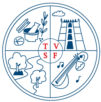“Music is capable of amazing journeys and meanings.”
-SIR HARRISON BIRTWISTLE, British Composer
It is a long- recognized fact that music has beneficial effects on living beings. A state of peace, tranquillity or emotional ecstasy is a common experience which accompanies music. As the impact of music could be easily gauged by a listener, music can be selectively used in controlling the physiological, psychological and even social aberrations in animals and man. Music, essentially and fundamentally, is an audio-satisfactory experience. The standards of satisfaction, of course, vary from individual to individual. From ancient times, music has been used for prevention and cure of many a human ailment. Shamanism, which aims at transforming the state of consciousness of those who suffer, has employed mainly resonance and rhythm to achieve its objective. Giant strides made in neuro-imaging techniques in recent years have also come to confirm the traditional role of music as a therapeutic tool.
With the arrival of sensitive instruments and equipment such as cathode-ray oscillograph, Einthoven galvanometer, electrocardiograms, Kymograph drum (for measurement of muscular tension), biomagnesonic transducers, vibroacoustic and vibrotactile gadgets in the scene, the neuro-musicologists have procured the latest weaponry which would enable them demystify the brain-music nexus.
There is a certain inherent fluidity about music, which helps one to melt away an attitude of stubbornness, common not only in the physical plane, but also in the mental and emotional realms. It is this fluidity in music, which has gone into the making of the Sanskrit term for intonation, nada, which literally means ‘to flow. For Copland, it is the flow of music, which forces us to use our imagination. He is also of the opinion that this flow could be the reason for its being in a ‘continual state of becoming’.
The Musical Process
The musical process, synchronized with the brain wave rhythms, promises a desired state of consciousness, either alerting or relaxing, depending on the musical inputs. For the musically-turned mind, this is a state of harmony, a state of inner silence, of causeless love and unconditioned joy. It is also akin to the healing state which can be described as a state of “relaxed alertness” – a true combination of “relaxation” and “alertness” which without music, would remain poles apart from each other!
Scientific findings, favouring music therapy for enhancing the cognitive ability of premature infants and helping the handicapped developing self-confidence are galore. Here, Mozart and Vivaldi seem to have stolen the show.
Possible Research Areas
Though the power of music is well-known, an appropriate duration of session for expected results needs to be researched upon and documented through clinical trials.
Lots of research needs to be carried out in the areas concerning selection of an appropriate raga and rhythms and gait which go with it. Duration of treatment, intensity or volume of music, intermission etc. are other areas that call for more experimental studies. Though still there is a need for more scientific work on this subject, existing evidence certainly indicates that music therapy could be used as a safe, non-invasive, complementary medicine for alleviating the sufferings of the people. It can be, in any case, used to minimize the psychotic stress-relaxed syndromes.
The New Science
Thanks to the new science’ – called PNI (Psychoneuroimmunology), the impact of music on the brain and the central nervous system, stands acknowledged. It is also fairly known to science that the sound impulses do reach the auditory cortex for a primary registration, but the meaning or the significance of the impulses is determined by that part of the brain around the auditory cortex and by the associated fibres. Another interesting finding relates to the surprising variety of neural representations or musical ability found in humans, which require plurality of neural mechanisms and brain representations. Brain imaging research has indicated that the primary motor cortex, the cerebellum and also the corpus callosum (the part that links the two hemispheres of the brain) are reported to be somewhat larger in adult musicians. Science is thus unveiling the relevance of music in our day-to-day existence.
Exciting times are therefore guaranteed.
In the meanwhile. let’s coat our medicine not with sugar – but with music!
This article was published in ‘AYURVEDA AND ALL’ – April 2007 – Page 19, 20
Edited by Geeta Shreedar, July 7, 2021
